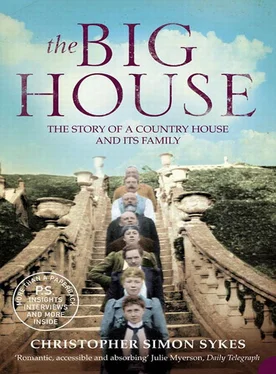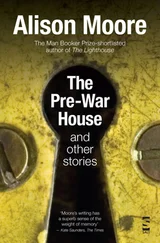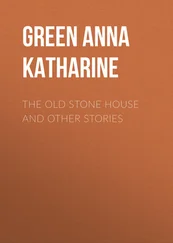The roof of the east wing was the first to go, falling in with a ‘great crash’, but this seemed merely to strengthen the determination of the workers. ‘Notwithstanding the menacing nature of their task,’ commented the local paper, ‘the rescue parties worked most splendidly, and the way in which the rooms were emptied of their principal contents without confusion or disorder was really wonderful.’ A new hazard was caused by the large quantities of molten lead from the roof, which poured down the walls and threatened to splash anyone who came too close to it. The men worked on undeterred. As one huge painting was carried precariously down a burning staircase, supervised by the under-gamekeeper, he was heard to mutter, ‘Now lads, don’t damage t’frame.’ 2 There were many narrow escapes. ‘A long ladder was placed against an upper window, from which a large wardrobe was being lowered, two men standing on the ladder to steady it. An ominous swaying of the ladder was followed by a crack, and a moment later the ladder snapped, carrying the two men with it. Fortunately they were unhurt beyond a shaking, though the wardrobe was smashed.’ 3 In the Library, the roof above crashed in and pierced the ceiling, sending burning debris raining down on the group working there, a heavy beam narrowly missing one of their number as it fell thirty feet to the floor. They made their escape down ladders from the open windows, and helped to load the huge quantity of books on to wagons which carted them away to be stored in the church.
The scene on the lawn was extraordinary, if piteous, with furniture and fittings, china, bed linen and mattresses, statues, gold and silver plate, paintings and books strewn around as far as the eye could see. In the midst of it all the melancholy figure of Sir Tatton paced up and down, his hands held firmly behind his back. He had one last request. In the Hall there stood a very fine piece of sculpture, a copy in marble of the famous Apollo Belvedere which had originally been part of the Duke of Devonshire’s collection at Londesborough. It had been left till last since it was thought it might escape the flames. However, since the centre of the house was by now blazing and roaring as through a gigantic chimney with temperatures that must have been close to 1,000°C, it was obvious that the statue had no chance of survival. Sir Tatton asked if it might be saved, a difficult task as it was reckoned to weigh close to a ton, and though the ceiling of the Hall was still intact, the back and east sides were fiercely blazing. ‘Scores of hands volunteered to remove the statue,’ recorded the correspondent of the Yorkshire Post . ‘Jets of water were poured on the ceiling, and the hall flooded. Water was also poured on the walls behind the statue, which was itself drenched, to render it cool enough to handle. The front door was removed, and the jambs wrenched down to admit the passage of the large life-size figure. With admirable skill it was lowered from its pedestal into the arms of the stalwart farm labourers and helpers, and finally carried out, with barely a break or scratch to the lawn.’ It was the last act of salvage possible.
Throughout the night the fire brigades worked to keep down the flames, but it was not until noon of the following day that the fire was finally extinguished. Little was left at the end beyond the four outer walls. Looking into the roofless building, one of the more curious sights was a fire-place on the first floor which had miraculously escaped the flames and which remained ready for lighting, complete with paper, sticks and coals. ‘Although I did not see the fire,’ wrote one of Sir Tatton’s grandchildren in later years, ‘the shock and horror among the household, and the blackened ruin with the pungent smell, filled me with fear for a long time.’ 4 Sir Tatton himself showed stoicism in the face of such disaster. ‘All he said when a word of sympathy was offered,’ commented the Yorkshire Post , ‘was, “These things will happen, these things will happen”, repeating the words with resigned fortitude and recognising the utter hopelessness of it all.’ 5 But the correspondent of the Yorkshire Post had not reckoned with the absolute determination of the family who had built and loved this house that it would live again.
A house is more than bricks and mortar. To those who inhabit it, it lives and breathes. It has moods. It has a smell, an indefinable scent that is as peculiar to it as a genetic code is to a human being. It is made from the peculiar mixture of paint, polish, carpets, dogs, leather, wood-smoke, dust, fabrics, plaster, wood, cooking, flowers and numerous other aromas that exist in a home. Pluck me from my bed, blindfold me, drop me anywhere in the world and I could pick out the smell of Sledmere from a thousand others. This is the house in which my family have lived for 250 years. It is where I was brought up and spent my adolescence. Though I left it when I was eighteen, I still feel attached to it as if by some invisible umbilical cord. I do not live there yet my roots are there. For good or for bad, it inhabits my soul.
From the outside, Sledmere is a plain building, built of grey stone, with a lack of embellishment that makes it seem a little austere. This suits its setting, high up on the Yorkshire Wolds. It is a large country house, always known in the village as ‘the big house’, but it is not a palace like its neighbour, Castle Howard. I know every nook and cranny of it and, sometimes, if I am lying in bed at night trying to sleep, I play a game in which I return home and take a journey round the rooms.
I walk through the back door, the way in which everyone enters the house, and on the left is the Lift Room, depository for all coats, hats and boots. A large cupboard which faces me is filled with bric-à-brac – discarded shoes, old kites, tennis rackets, dog leads etc. – its drawers overflowing with objects that remain there year after year. In one corner there is a rack full of walking sticks, which immediately remind me of my late father. When my brother’s bull terrier, Lambchop, occupied the room for years, it became known as the Dog’s Lobby. To the right is the lift, to which the room owes its name. Built by Pickerings of Hull, it has steel folding doors with a small viewing window. As a child I was terrified of getting stuck in it between floors: something that did occasionally happen and, even today, my brother, Tatton, who now inhabits the house, won’t travel in it alone at night.
Beyond the lift, a stone passage runs the width of the house, leading on the left to the Staff Cloak Room, the Brush Room and the Servants’ Hall, and on the right to the Kitchen, the Small Dining Room and the Pantry. It is a hive of activity, particularly in the mornings, with Sue, the housekeeper, and her ladies arriving at eight to clean and dust, Maureen, the cook, soon afterwards, to prepare breakfast, and from then on a succession of callers – the postman, the gardeners, the works department – coming to conduct their business. This is where I spent much of my childhood, in and out of the Kitchen, the Servants’ Hall and what was then my father’s secretary, Mouzelle’s room, now the Small Dining Room.
I pass through a heavy swing door, halfway up the passage, which leads into the main part of the house, the first space being the stairwell of the back staircase, known as the Blue Stairs. It is dominated by a vast marble Roman statue of Caesar Augustus, which throws eerie shadows on the wall at night. Opposite the stairs, a door leads into the Turkish Room, decorated from floor to ceiling with twentieth-century copies of ancient Iznik tiles. This was my grandfather, Mark Sykes’s folly, a monument to his love of the Middle East, and if his ghost walks anywhere in the house, then it is in here. In the nineteen-sixties, I used to set up my music in the Turkish Room, fill it with candles, and come and smoke and chill out in it. Below it, down a flight of stone steps, are the Gentleman’s Cloakroom and the Gun Room.
Читать дальше












![Edward Ellis - Adrift on the Pacific - A Boys [sic] Story of the Sea and its Perils](/books/753342/edward-ellis-adrift-on-the-pacific-a-boys-sic-s-thumb.webp)